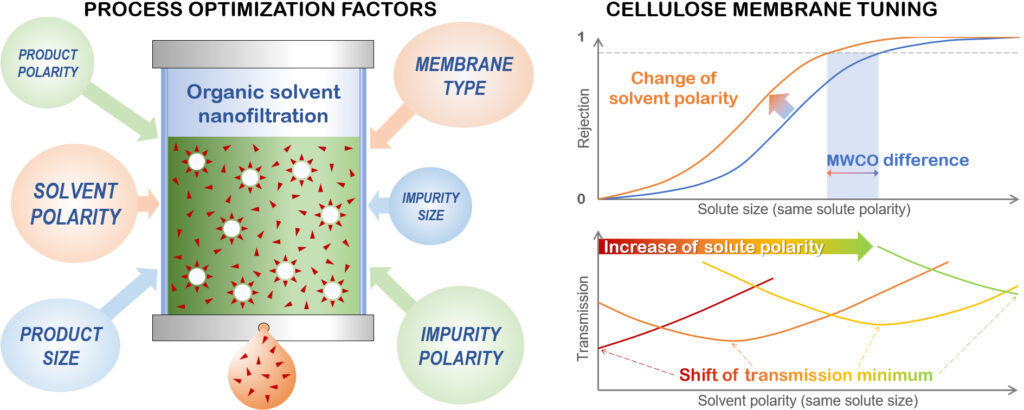Cellulose, as a renewable material with unique properties, is utilized also for the fabrication of filters and membranes for a wide application range starting at common filtration and reaching the border between ultrafiltration and nanofiltration, where the pore size is in the nanometer scale. While these membranes are typically applied in an aqueous environment, the excellent chemical resistance of cellulose makes it suitable also for use in organic solvents. It is however likely that the behavior of nanoporous cellulose membranes in nonaqueous systems will differ from that in water.
The research of Dr. Strašák‘s group is focused on the synthesis of functionalized carbosilane dendrimers for catalytic and molecular biology applications. Separation from mixtures and purification plays a key role in the synthesis of dendrimers, while the choice of methods is rather restricted compared to common organic synthesis. Nanofiltration, especially in organic solvents, emerges as a potent tool for dendrimer purification.
A recently published study in the reputable journal Separation and Purification Technology deals with the possibility to use tight commercial cellulose membranes, designed for aqueous ultrafiltration, and also for organic solvent nanofiltration. We were particularly interested in the changes in membrane separation ability depending on the polarity of the used solvent. Apart from the fact that decreasing solvent polarity and consequent loss of cellulose solvation leads to the reduction of effective pore size (i.e. change in molecular weight cutoff), a marked influence of the shape and polarity of small molecules on the relative rate of their transport, in some cases overcoming the influence of their size, was observed. The results showed that the transport of molecules through cellulose membranes with molecular weight cutoff on the edge between ultra- and nanofiltration cannot be described simply as a pore flow, as, due to small pore size, mutual interactions of membrane material, solvent, and transported solute play an important role. Gained knowledge facilitates the optimization of the nanofiltration process in organic solvents according to the needs of each particular separation.

- Krupková, Alena*, Müllerová, Monika, Petričkovič, Roman, Strašák, Tomáš. On the edge between organic solvent nanofiltration and ultrafiltration: Characterization of regenerated cellulose membrane with aspect on dendrimer purification and recycling. Sep. Purif. Technol. 2023, 310, 123141. doi: 10.1016/j.seppur.2023.123141.